COLLEGE RESEARCH BALLOON FLIGHTS
Applications are accepted at any time!
College students, faculty, and staff who are interested in utilizing our high-altitude balloon program for their own research or educational initiatives must submit an application and short flight proposal. Proposals will be reviewed year-round. Due to limited personnel and other prior ballooning commitments, we cannot guarantee availability (or good weather) on the proposed flight date(s). Please consider this when developing your proposal timelines.
ELIGIBILITY
- Open to students, faculty, and staff at UW and Wyoming community colleges
- Research groups, class projects, senior design projects, and individual student or faculty/staff projects are all eligible
PROPOSAL REQUIREMENTS
- Proposals must be submitted at least 3 months prior to the proposed flight date to allow time for review, planning, and flight prep
- If the proposed flight is part of a project that is already funded (or is expected to be funded), we ask that the project’s primary source of funding cover as many of the flight costs as possible
- At least one student or faculty/staff member associated with the project should participate in the balloon launch and payload recovery
FLIGHT PROPOSAL SUBMISSION
Completed applications must be submitted through the ONLINE FLIGHT APPLICATION FORM. Our review process will consider the merit of the proposed flight, alternate funding potential, and flight personnel availability based on the proposed timeline.
There are three parts required for a complete proposal:
- Online Application Form
- Proposal Document (Instructions) – Must be uploaded with the online application form. Please write for a non-technical, general audience.
- Letter of Support (Student projects only) – Must be submitted by the student’s advisor by e-mail directly to wsgc@uwyo.edu.
- Curriculum Vitae (Faculty/Staff proposals only) – Must be uploaded with the online application form.
FLIGHT EQUIPMENT & RESOURCES
The following is required for all of our high-altitude balloon flights:
- Balloon
- Parachute
- Primary tracking device
- Backup tracking device
- At least one custom payload package provided by the student or faculty/staff
- Helium
- At least one recovery vehicle
We also provide optional camera packages that proposers may choose to fly on the payload. All of these equipment items are described in more detail below. Some equipment is free to use, others incur a cost. For accepted proposals, the Wyoming NASA Space Grant will absorb these costs only if no other funding is available.
Balloon (Required)
The WY Space Grant usually carries two sizes (masses) of latex balloons, 1200 grams and 1500/1600 grams. Larger balloons generally have wider burst diameters and therefore can (in theory) lift payloads higher into the atmosphere, all else being equal. We have found that both sizes we carry are usually more than adequate to lift our payloads (<5.5 kg) up to altitudes of at least 90,000 ft above sea level.
Latex balloons can be purchased in a wide range of other sizes as well, all the way to 4000 grams. If the student or faculty member wishes to provide their own balloons, make sure to include the balloon size in the proposal. Balloons can be purchased from a variety of online vendors (e.g., Kaymont).
Cost: We charge a flat $120 for each of our 1200-gram and 1500- or 1600-gram balloons
Mass: Not included in payload
Parachute (Required)
The Wyoming NASA Space Grant provides a 72-inch parachute that is more than adequate to slow the near-surface descent rate of a 5.5-kg payload to about 1,500–2,000 m/s. This allows for a relatively safe and gentle landing. If the student or faculty member wishes to use a different parachute, please indicate the reason and make sure to include information about its width, mass, and overall design in the proposal.
Cost: We do not charge for the use of our parachutes
Mass: 273 grams
Tracking Device (Required)
The Wyoming NASA Space Grant provides a very useful and reliable tracking package called the SatCom, which is built by a company called Stratostar. The SatCom not only includes GPS tracking technology, but it’s also equipped with a suite of sensors that measure temperature, air pressure, relative humidity, acceleration, and rotation. It uses the GPS measurements to determine wind speed and direction. During flight, the SatCom transmits its data to the Iridium satellite network once every minute and logs data to an onboard SD card every 5 seconds. The satellite network sends the data directly to the internet, allowing us to monitor the data and track the payload in real time from our computers or smartphones.
Please note that the temperature and humidity measurements from the SatCom are not very accurate. If the project requires highly accurate meteorological measurements, consider flying your own sensors in a separate package.
Cost: We charge $125 per flight to access to the Iridium network
Mass: 985 grams
Backup Tracking Device (Required)
The Wyoming NASA Space Grant provides a package of two SPOT GPS trackers for use as a backup tracking device, in the unlikely event that the SatCom fails or loses battery power in flight. These transmit their location (latitude and longitude) to the Globalstar satellite network every 10 minutes.
Cost: We do not charge for the use of our backup GPS devices
Mass: 366 grams
Custom Payload Package (Required)
When using our ballooning services, college students and faculty members are expected to fly at least one custom payload package. A thorough description of the custom package(s) must be provided in the proposal. Make sure to include information about dimensions, mass, onboard electronics, batteries, communication frequencies, experiments, sensors, measuring devices, and anything else that is relevant. Please also make sure the package(s) conform to the following guidelines:
- Per FAA regulations…
- No package can have a mass greater than 2,727 grams (6 lbs)
- If a package exceeds 1,818 grams (4 lbs), it must have a weight/size ratio of less than 3 oz/in2 (calculated by dividing total package mass by area of smallest side)
- No live animals or items that are otherwise illegal
- No items that are highly flammable, explosive, or combustible
- No sharply pointed objects sticking out of the packages
- Use liquids conservatively and enclose any potentially messy items
If the student or faculty members wishes to fly their own cameras, make sure to include that information in the proposal. The very low temperatures and overall harsh environment in the upper atmosphere can take a toll on battery life, so be sure to account for that.
*All costs associated with custom payload packages must be 100% paid for by other funding sources.
Helium (Required)
The Wyoming NASA Space Grant provides up to two compressed helium cylinders per launch. Each cylinder will have a helium capacity of either 200 cubic ft (K-size) or 300 cubic ft (T-size), depending on availability from our local vendor. Having two cylinders is necessary for the majority of our flights, especially those with heavier payloads. It usually takes about 300–400 cubic ft of helium to fill the balloon so that it has enough free lift to carry the payload upward at an acceptable ascent rate (i.e., about 5–6 m/s). Heavier payloads require more helium. One K-size cylinder is almost never enough to completely fill the balloon, even for very light payloads. One T-size cylinder is sometimes adequate, but only for payloads of about 3 kg or less.
We currently get our helium from the Chemical Stockroom at UW, who in turn sources it from Airgas. Helium prices tend to be quite volatile from year to year, and ongoing helium shortages can exacerbate this issue. Most of the time, we get industrial-grade (99.995%) helium. However, other grades are sometimes available as well, such as the more expensive ultra-high purity (UHP; 99.999%), or the cheaper balloon-grade (99.5%). For ballooning, there isn’t really any noticeable difference between the grades except for cost. If the student or faculty member wishes to provide their own helium, make sure to include information in the proposal about what grade will be provided and how much.
Cost: The UW Chemical Stockroom currently charges us $175/cylinder for both K-size and T-size cylinders of industrial-grade helium
Recovery Vehicle (Required)
The Wyoming NASA Space Grant provides one 9-passenger 4WD Suburban for both helium transport and payload recovery. Payloads go wherever the wind takes them, which means they potentially could land very far from paved roads. We rent 4WD recovery vehicles with good clearance in case we need to access rough dirt roads or two tracks to get close to the payload.
We get our rental vehicles from Fleet Services at UW. If the student or faculty member wishes to cover the cost of our Suburban or provide their own additional recovery vehicle(s), make sure to include the relevant information in the proposal. Multiple recovery vehicles may be necessary, depending on the number of participants. We discourage the use of personal vehicles for payload recovery unless they have 4WD, good clearance, and good history/reliability.
Cost: UW Fleet Services currently charges us $123/day for each Suburban, plus the cost of refilling the gas tank (see their latest rates here)
GoPro Camera Package (Optional)
As an optional “add-on” to the payload, the Wyoming NASA Space Grant provides a GoPro Hero5 Session camera package that captures high-quality footage with three cameras pointed in different directions: up, down, and to the side. If payload mass is a concern, the package can be configured to carry anywhere from one to three cameras. Footage is generally captured at 1080p and 60 frames per second. The use of external battery packs and large-capacity microSD cards typically allows for about 3 hours of continuous footage, more than enough for a single balloon flight.
Cost: We do not charge for the use of our GoPro cameras
Mass: Each camera is 154 grams, the full package (3 cameras plus the box) is 911 grams
Additional Cameras (Optional)
As another add-on, the Wyoming NASA Space Grant provides individual Contour HD cameras that can be mounted on custom payloads to monitor experiments or capture of other angles not available with our GoPro package. These cameras yield lower-quality footage compared to the GoPros, but can still record up to 1080p and 60 frames per second. The student or faculty member will need to personally mount these cameras on their own payload packages.
Cost: We do not charge for the use of these additional cameras
Mass: Each camera is 150 grams each

